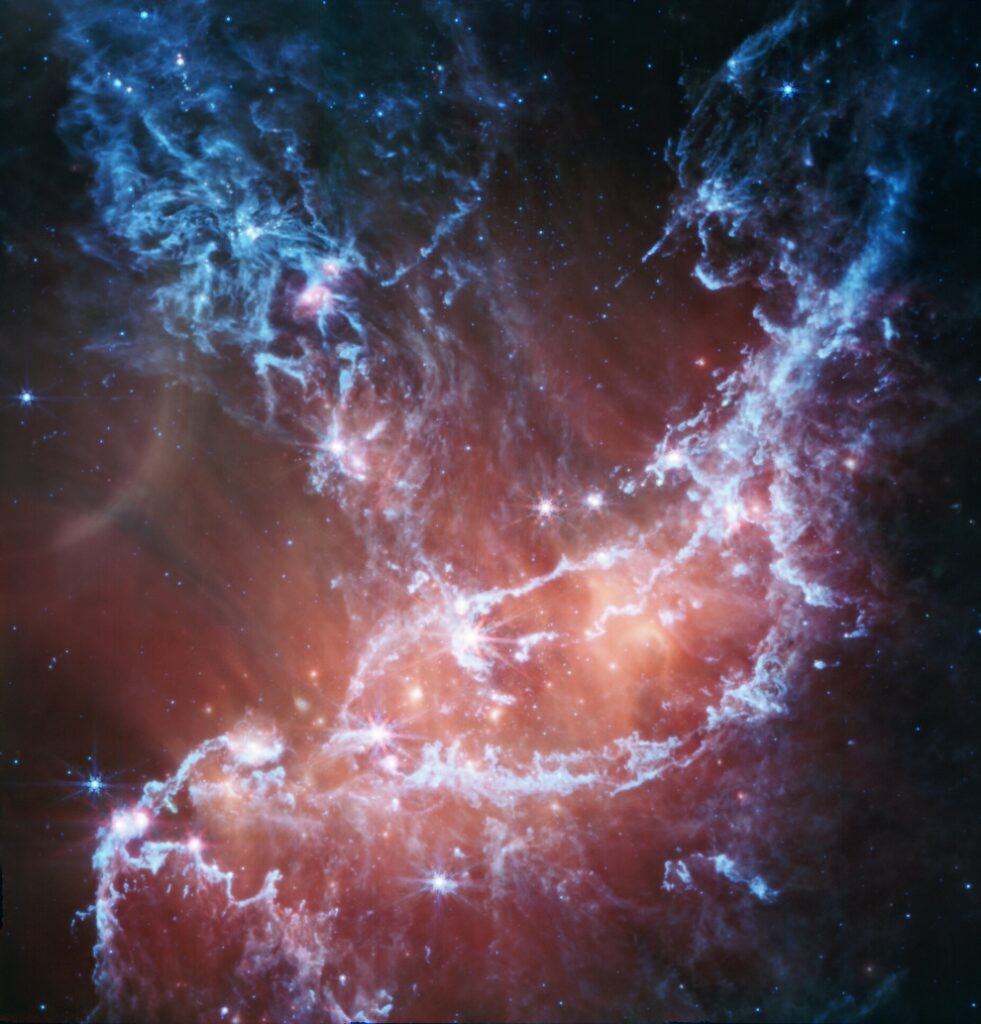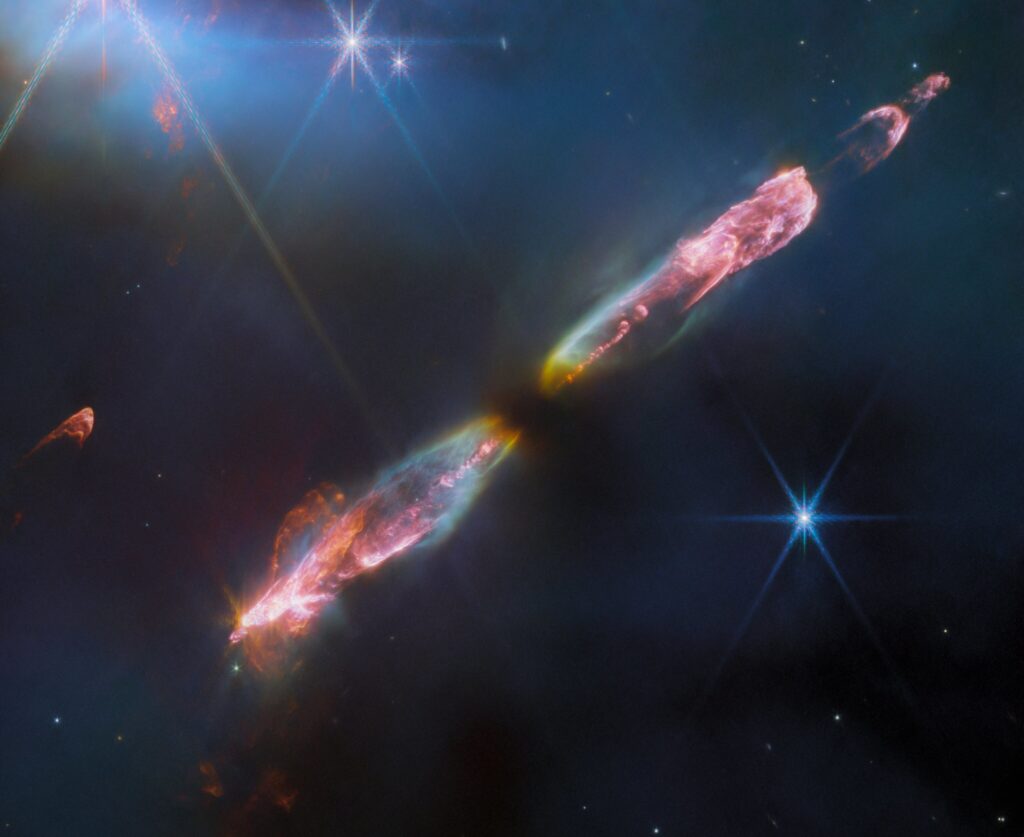Halloween is only weeks and NASA is having some fun with its latest release from the James Webb Space Telescope adding the caption Grim grinning ghosts 👻.

Here’s the full description from the image released today.
Webb’s getting into the Halloween spirit early. The telescope captured this spectral view of star-forming region NGC 346 in mid-infrared light. The blue tendrils represent silicates and sooty chemical molecules, while the red glow represents warm dust heated by the brightest and most massive stars at the heart of the region. This area is also abundant with baby stars still embedded in their dusty cocoons.
NGC 346 is part of the Small Magellanic Cloud, a satellite galaxy of the Milky Way. It has a composition much closer to that of galaxies from the early universe and possesses fewer heavy elements. Accordingly, scientists did not expect much cosmic dust, which is formed by heavy elements. However, both Webb’s new mid-infrared look at NGC 346 and its past near-infrared view (released Jan. 2023) show plenty of dust! Here’s the full scoop on the image: go.nasa.gov/3tykabJ.
The image is the latest, about 5 or 6 per month being released. A couple of weeks the team released an image using the Near Infrared Camera (NIRCam) which is telescope’s primary imager and covers the infrared wavelength range 0.6 to 5 microns. That image below is mind blogging in how many stars are in the field of view.

NASA describes the image as follows: A huge, dense field completely filled with tiny stars. Many galaxies of various shapes and sizes can be seen hiding behind the stars. In the center, there is some faint, wispy, dark red gas. A few of the stars imaged are a bit larger than the rest, with visible diffraction spikes. Two foreground stars are particularly large and bright on the right side.
Another stunning release is the following image of a young star.

NASA describes the image as follows:
If we could take a baby picture of our Sun, it might look something like this. 👶
Seen in this Webb image is a newborn star with supersonic jets of gas spewing from its poles. It’s only a few tens of thousands of years old here, but when it grows up, it’ll be much like our Sun.
Bright regions around newborn stars, as seen here, are called Herbig-Haro objects. This specific Herbig-Haro object is called Herbig-Haro (HH) 211. At roughly 1,000 light-years away from Earth, it’s one of the youngest and nearest objects of its type.
Herbig-Haro objects are created when jets of gas from these newborn stars form shockwaves as they collide with surrounding gas and dust. Webb’s sensitive infrared vision can pierce through the gas and dust, picking up on the heat emissions from the star’s outflows and mapping out structure in unprecedented detail. Interestingly, Webb observations have also shown that the outflows from this object are slower in comparison to that of more developed baby stars. Learn more: go.nasa.gov/3Pb0xOg.
And here’s one last incredible recent image, M51 also know as NGC 5194.
Seen here by Webb’s Mid-Infrared Instrument (MIRI) is the galaxy M51, also known as NGC 5194. The gravity of its neighbor, the dwarf galaxy NGC 5195, is thought to be partially responsible for those prominent & distinct spiral arms! While MIRI brings out the web-like structure of the dust in the galaxy, NIRCam focuses more on ionized gas from newly formed star clusters. More: esawebb.org/images/potm2308c/.
 SpaceQ Space news and analysis.
SpaceQ Space news and analysis.





